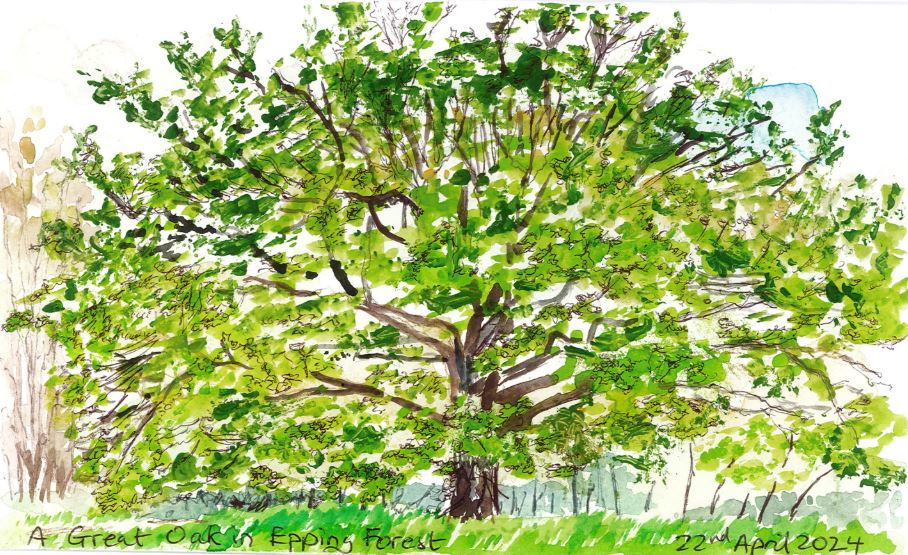“1. inventive and imaginative. 2. creating or able to create.” (Fowler and Fowler, 1990, p. 272)
This is how the Concise Oxford English Dictionary defines ‘creative’. It defines ‘create’ like this:
“1. bring into existence…” (Fowler and Fowler, 1990, p. 272)
These are simple definitions of the words ‘creative’ and ‘create’. Arguably, these definitions lead to questions. For example, the above definitions of ‘creative’ suggests that a person needs to be inventive or imaginative to bring something into existence. This brief article helps us consider such questions and the essence of creativity.
At a recent knowledge café about the strongest motivations for creativity, some participants argued that exploration and curiosity were part of the creative process (Sharp, 2024). However, others argued that curiosity and exploration do not necessarily lead to ‘bringing something into existence’, ‘inventing something’ or ‘use of the imagination’ and therefore exploration and curiosity alone are not enough to satisfy the definition of ‘creative’ (Sharp, 2024 and see above).
Literature on the subject tends to emphasise the value of doing creative activities for a person to be creative. Activities like writing, photography, filmmaking, art, and dance are often used as examples and space, time and encouragement may be required to do them (Cameron, 2016). Cameron (2016) links such acts to the essence of human spirit and argues that doing such things provide people with personal fulfilment, and/or spiritual enlightenment. Other writers emphasise the significance of applying the brain and senses in ways that make connections between different ideas and experiences to produce imaginative and creative outcomes (Gelb, 1998). This may entail adopting a creative mindset that follows in the footsteps of Leonardo da Vinci (Gelb, 1998). Other writers adopt viewpoints that concur with Gelb but link creativity to a curious mindset that learns from others and gives rise, through note-taking and other techniques, to a problem-solving ability (Adair, 2007). Others comment on the psychological motivation for creativity and the conditions that may or may not give rise to creative acts (Vernon, 1973). For example, some writers argue that problems that require a ‘solution’ can help generate creative thinking, whereas some education systems and assessment processes can quell creativity (Vernon, 1973). On the other hand, others tend to emphasise the importance of having space for fun and creative acts without having a set agenda or problem to solve (e.g. Cameron, 2016). This can also lead to creative outputs that flow ‘from within’ (Cameron, 2016).
Recently, I spent time in Epping Forest in Essex painting an oak tree (see Figure 1).
Figure 1 Oak Tree in Epping Forest

The question that I ask myself is: is this a creative act? Arguably it is not imaginative because I observed the oak tree and painted my impression of what I saw. Although it is not a ‘pure copy’ of the tree, there is a distinct element of trying to give a good impression of it using watercolour paints. However, arguably, it is inventive because it took time to find a ‘good angle’ and create a composition on the paper that makes a good impression on the eye. Even the selection of tree has an impact on this. This involves original thinking, even though it is inspired by nature. This activity clearly entailed ‘bringing something into existence’. So, overall, I would conclude that this is a creative outcome from a creative activity. Ultimately, if you believe God created the heavens and earth, then this activity mirrors, in a very small and far less glorious way, that first act of creation.
Dr Peter Sharp 24th April 2024
References
Adair, J. (2007) {reprint} The Art of Creative Thinking, Kogan Page, 120 Pentonville Road, London, N1 9JN: ISBN: 13 978 0 7494 1.
Cameron, J. (2016) The Artist’s Way – The Spiritual Path to Higher Creativity, MacMillan, 20 New Wharf Road, London, N1 9RR: ISBN: 978 1 5098 2947 7.
Gelb, M. (1998) How to Think Like Leonardo da Vinci, HarperCollinsPublishers, 77-85 Fulham Palace Road, Hammersmith, London W6 8JB, ISBN: 07225 3718 2.
Fowler, H. W. and Fowler, F. G. (1990) The Concise Oxford Dictionary of Current English, Clarendon Press, Oxford, 1990.
Sharp, P. J. (2024) London Knowledge Café Revitalised: What are the Strongest Motives for Creative Enterprise in your Life?, 7th February 2024 {accessed from https://knowledgelearningpd.wordpress.com/2024/02/14/london-knowledge-cafe-revitalised-what-are-the-strongest-motives-for-creative-endeavour-in-your-life/ on 28th February 2024}
Vernon, P. E. (1973) (ed) Creativity, Penguin Education, Penguin Books Ltd, Harmonsworth, Middlesex, England (reprint).